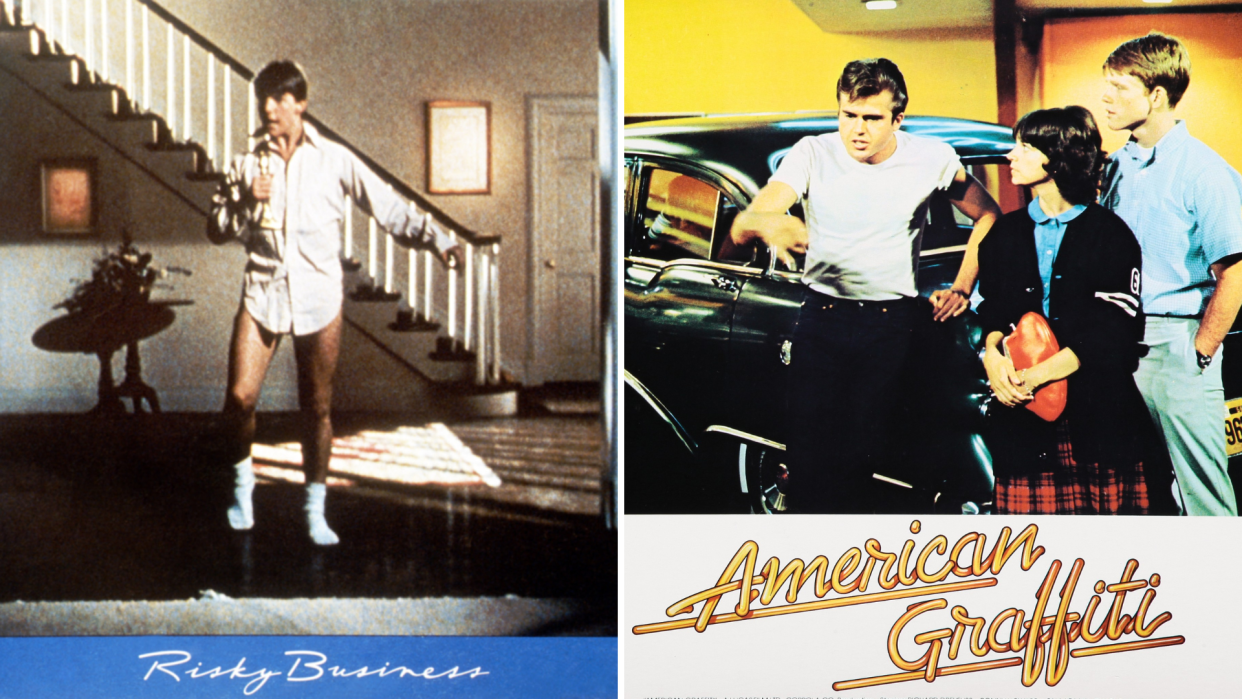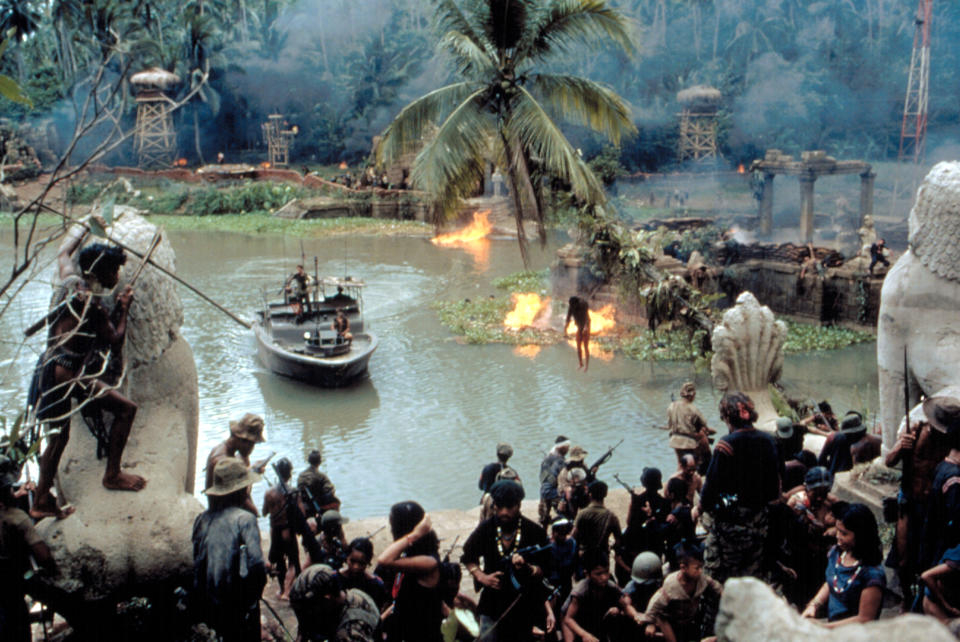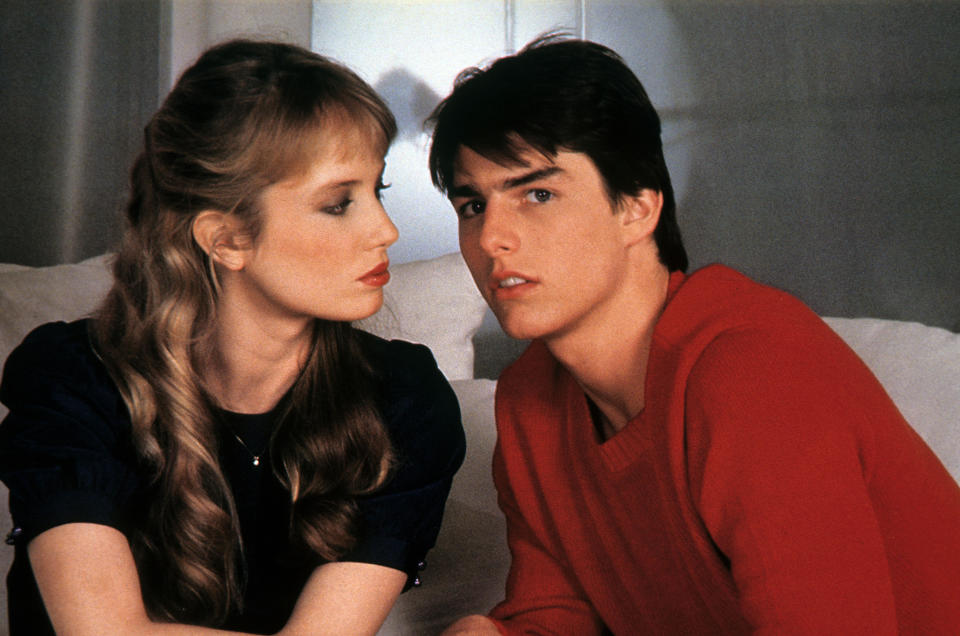From ‘American Graffiti’ and ‘Risky Business’ to ‘Barbie’ and ‘Oppenheimer’: Summer Is the Smart Movie Season

- Oops!Something went wrong.Please try again later.
- Oops!Something went wrong.Please try again later.
Two personal, stylish, and distinctive films celebrate major birthdays this month: “Risky Business” turned 40 August 5 and August 1 marked the 50th anniversary of the release of “American Graffiti.”
Two other personal, stylish, and distinctive films also celebrate their blockbuster success this August: “Barbie,” which is now $1 billion worldwide and counting, and “Oppenheimer,” which just crossed $600 million.
More from IndieWire
'Sound of Freedom' Filmmakers Shut Down Claims Movie Is Tied to QAnon
'Spider-Man: Across the Spider-Verse' Thrives Again on VOD, While 'Heart of Stone' Is #1 at Netflix
August is generally known for providing the dog days of summer box office. It’s the end of the road, kids are going back to school. There’s no time for a blockbuster to stretch its legs and no one’s in the mood for anything weighty. The current studio release calendar bears out that logic with “Teenage Mutant Ninja Turtles: Mutant Mayhem,” “The Last Voyage of the Demeter,” “Gran Turismo,” “Blue Beetle,” and “Strays.”

History tells us it doesn’t have to be that way. Among the smarter films that received wide release in August are “Apocalypse Now” (1979), “Body Heat” (1981), “The Fly” (1986), “No Way Out” (1987), “Parenthood” (1989), “Mo’ Better Blues” (1990), “Unforgiven” (1992), “The Fugitive” (1993), “Natural Born Killers” (1994), “The Sixth Sense” (1999), “Collateral” (2004), “The 40-Year-Old Virgin” (2005), “Inglourious Basterds” (2009), “District 9” (2009), “The Help” (2011), and “Straight Outta Compton” (2015).
Some of this may represent revisionist thinking — nearly 40 years ago, “The Fly” wasn’t an anticipated new work from body-horror auteur David Cronenberg; it was a ’50s-horror remake starring a guy from “The Big Chill” and the actress who starred in the single-season sitcom “Sara.” In the future, we might regard a second-tier DC title like “Blue Beetle” in a similar light.
However, summer wasn’t even recognized as a primary movie-going season until the June 1975 debut of “Jaws.” Prior to that hit, many theaters didn’t prioritize adequate air conditioning in the belief that people would rather be outside, anyway. A late-summer release meant most theaters would play the film in September or later.
So when Universal dated “American Graffiti” for August, it was without great expectations. The studio and director George Lucas fought over the title, the editing, and the release plan; at one point Universal wanted it to be a TV movie. Francis Ford Coppola offered to buy the film, as did other studios, and perhaps that’s what made hidebound execs recognize the film’s potential.
Once the fighting stopped, the “Graffiti” release pattern was smart. It went wider than usual with multiple theaters in top cities, emphasizing university towns. In current dollars, it cost $9 million all in for production and marketing and grossed $600 million domestic (adjusted), which made it #3 for the year. That allowed Lucas to make “Star Wars.” (Universal had first dibs and rejected it.)

“Risky Business” was an early production from the Geffen Film Company, which made a series of outstanding films (released by Warner Bros.) from directors like Martin Scorsese, Albert Brooks, and David Cronenberg.
Bolstered by strong reviews and even better audience response, it was the #10 release of 1983, grossing over $200 million adjusted (more than 10 times its adjusted budget). It opened in third place, then saw its box office increase by seven percent in its second week and 15 percent in its third. It stayed in the Top 10 for 13 weeks.
“American Graffiti” and “Risky Business” shared teenage leads, strong scores, and a visual and narrative style that felt fresh and bold. Both also had suburban milieus — 1962 Modesto, California and upscale Chicago — that portrayed nearly all-white worlds and an all-male perspective. (“Graffiti” immediately got flak when its end credits featured “what happened to” its characters, with no mention of the roles memorably portrayed by Cindy Williams, Mackenzie Phillips, and Candy Clark.)
“Barbie” and “Oppenheimer” opened July 21, after this summer’s franchises played (and burned) out. They’re fresh, intelligent, different, and massive successes. However, there’s a lack of faith in these kinds of summer films. Certainly there’s a lack of supply — few are even being made — but most default to premiering at the fall film festivals instead.
“Graffiti” and “Risky,” along with “Barbie” and “Oppenheimer,” attained cinematic immortality. That they were late-summer releases is something for studio decision makers to remember.
Best of IndieWire
Unsimulated Sex Scenes in Film: 'Nymphomaniac,' 'Brown Bunny,' 'Little Ashes,' and More
The Best LGBTQ Movies and TV Shows Streaming on Netflix Right Now
Sign up for Indiewire's Newsletter. For the latest news, follow us on Facebook, Twitter, and Instagram.

